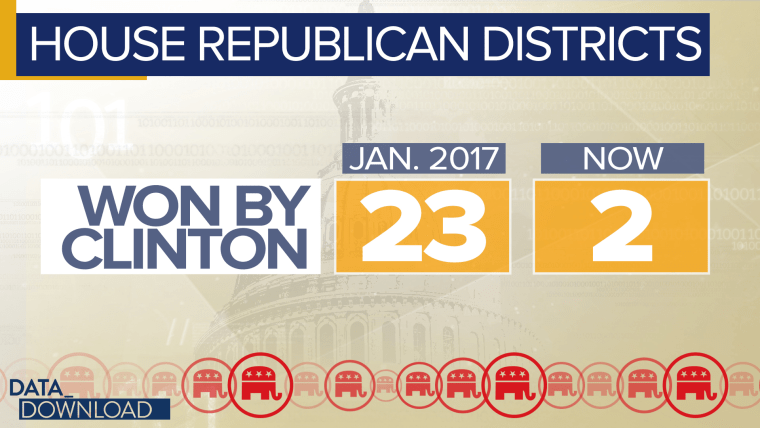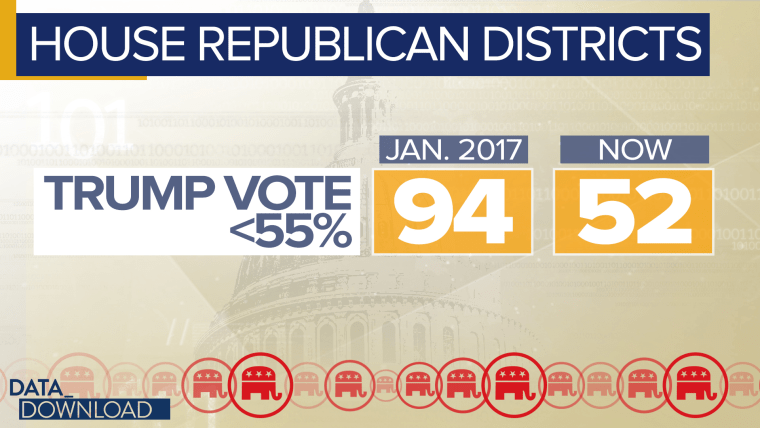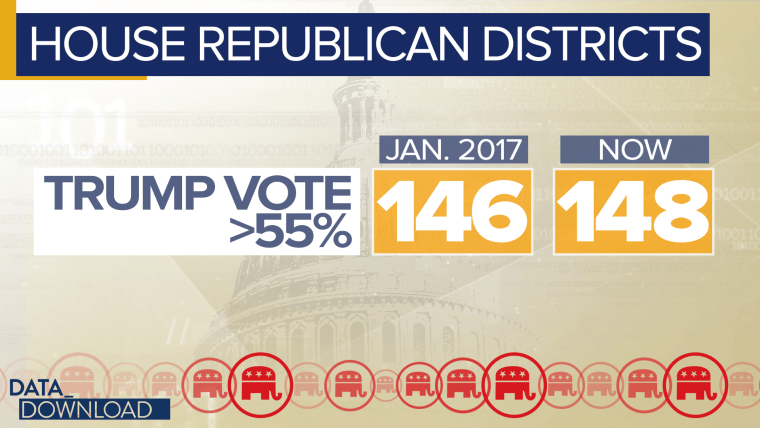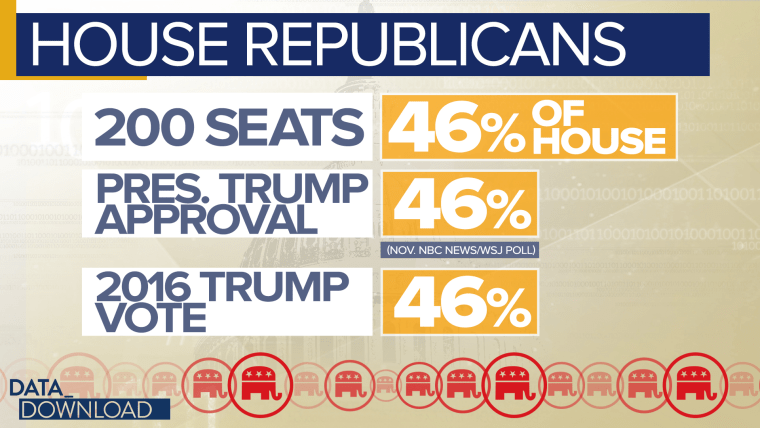WASHINGTON — This week a new Democratic majority arrived in the House of Representatives promising to change Washington. But along with it came a new Republican minority that is made much more in the image of President Donald Trump.
The 2018 midterms may have shifted power in Washington, but they also deepened the divide between the two parties, particularly in the House. A walk through of presidential results in House districts shows how the GOP landscape has shifted.
Through the most basic frame, a change can be seen in the GOP/Clinton districts — those are seats where Hillary Clinton won the presidential vote in 2016 while a Republican won the congressional race.

As Trump took office in 2017 there were 23 of these seats in the House, but after the 2018 midterms, there are only two such seats. The other 21 districts flipped to the Democrats.
Those numbers matter because of how they changed the political character of the House Republicans. There may be fewer Republicans in the lower chamber now, but those that remain are tethered more closely to Trump and his view of the party.
And you can see the shift using other measures as well. The 200 Republicans left in the House are also more likely to come from districts that voted heavily for Trump in 2016.

In January 2017, 23 House Republicans came from districts that gave Trump 70 percent or more of their vote and 146 members came from districts that gave Trump 55 percent or more.
But after November, 24 Republicans in the House came from districts that gave Trump 70 percent or more of their vote and 148 came from districts that gave Trump at least 55 percent of their vote
That’s right, the number of deep Trump districts actually grew slightly after November. That had to do with redistricting in Pennsylvania, so the best way to think about the numbers may be that those deep Trump numbers were essentially flat.
The real change came at the other end, the Republican losses in districts that did not give Trump big support in 2016.

Two years ago, a pretty large segment of the House Republicans came from districts that were not deeply behind Trump — 94 GOP members came from districts where Trump captured less than 55 percent of the vote. And 37 members came from districts where Trump captured less than 50 percent of the vote.
As of this week, only 52 House Republicans come from districts where Trump received less than 55 percent of the presidential vote, a decline of 42 seats. And Republicans now only hold six seats in districts where Trump got less than 50 percent of the vote.
To some extent, those numbers are not a huge surprise. Congressional districts where the presidential vote was close are always likely to be more competitive when midterms arrive. But in this particular case, the numbers may have greater meaning.
Trump is not a standard-issue Republican president. He regularly challenges the traditional party orthodoxy on a range of issues – from trade to foreign policy. And viewing the president and the party through that prism, one can see the new House GOP minority as a consolidation of power for the Trump idea of what the Republican Party should be.
In other words, the new House may be less Republican than its predecessor but is arguably more Trump-y.

In fact, when you take a step back, the overall numbers in the new House are very much in line with President Trump’s standing with the public. If Republicans win North Carolina’s still-contested 9th Congressional District race, the GOP would have 200 members in the House. That’s 200 out of 435 total, or 46 percent. That number, 46 percent, was precisely Trump’s job approval number among registered voters in the November NBC News/Wall Street Journal poll.
The question is what does that 46 percent in the House do now? The hallmark of Trump's base is its rock-solid, steadfast nature. If this new House follows that pattern, get ready for a bumpy and contentious 2019.